Most people outside of Pennsylvania and a few neighboring states haven’t heard of scrapple, but this dish is an important part of American culinary history. Inspired by German recipes that combined pork scraps, blood, and buckwheat and cooked it into a sliceable loaf, the Pennsylvania Dutch (who are in fact German immigrants, not Dutch) made a new version that omitted the blood and sometimes substituted cornmeal for part of the buckwheat.
Scrapple is a food that came out of scarcity and necessity, but like many other creative foods invented to stretch the leftovers, it’s absolutely delicious. The loaf is rich, creamy, and satisfying, and the final step, frying the slices, gives it a golden-brown crust with a lovely crunch. In this article, I’ll explain exactly how to make scrapple, a traditional Pennsylvania Dutch cornmeal and pork loaf, with pictures and detailed step-by-step instructions.
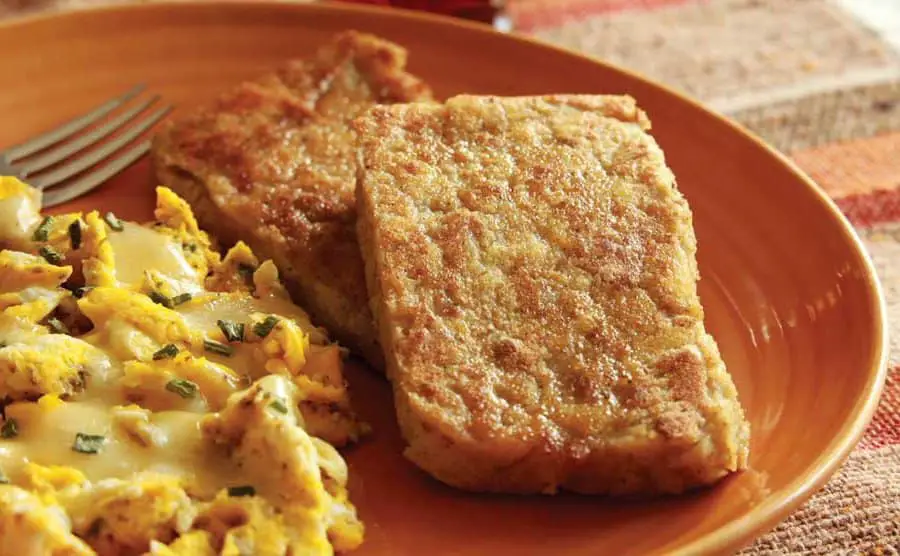
Ingredients
- Approximately 1 pound pork, such as butt, liver, or heart (see below)
- 1⁄2 cup buckwheat flour
- 1⁄2 cup cornmeal
- ~2 quarts water
- 1⁄4 tsp crushed sage
- 1⁄4 tsp black pepper
- 1 tsp salt
- Vegetable oil, butter, or lard, for frying
- Extras for serving – eggs, maple syrup, jam, etc. (see Ingredient Options)
Materials
- Large stockpot
- Strainer
- Meat grinder or cutting board and sharp knife
- Whisk
- 9x5x3 loaf pan
- Heavy frying pan
- Spatula
Ingredient Options
Scrapple is by nature a very flexible dish – it was created to use up all the edible but awkward parts of a pig, including small pieces of meat, organs such as the heart and liver, and even tougher parts like the skin and snout. Many cooks use a mixture of meat, such as butt or rib meat, along with some heart and liver. For example, you could use 1⁄2 pound of pork butt along with 1⁄4 pound of liver and 1⁄4 pound of heart. If you want to keep it simple, or are feeling a little nervous about using organ meats, you can use just one cut of pork, or even ground pork sausage! That will ensure a milder flavor. If you use any bone-in cuts, remember to take bone weight into account. If you want 1⁄2 pound of cooked rib meat, start with 1-11⁄2 pounds of ribs.
The other big ingredient question is using buckwheat, or cornmeal, or both. Originally, German scrapple contained only buckwheat, but over time cornmeal became a popular addition in parts of Pennsylvania. It’s fine to use a mix of the two, but many cooks agree that if it doesn’t have at least some buckwheat, it’s not true scrapple. The buckwheat helps give it a smooth texture (reducing the grittiness of pure cornmeal) and a nutty, toasty flavor. This recipe calls for half buckwheat and half cornmeal, though you can also use only buckwheat if you wish, or only cornmeal if you can’t find buckwheat flour.
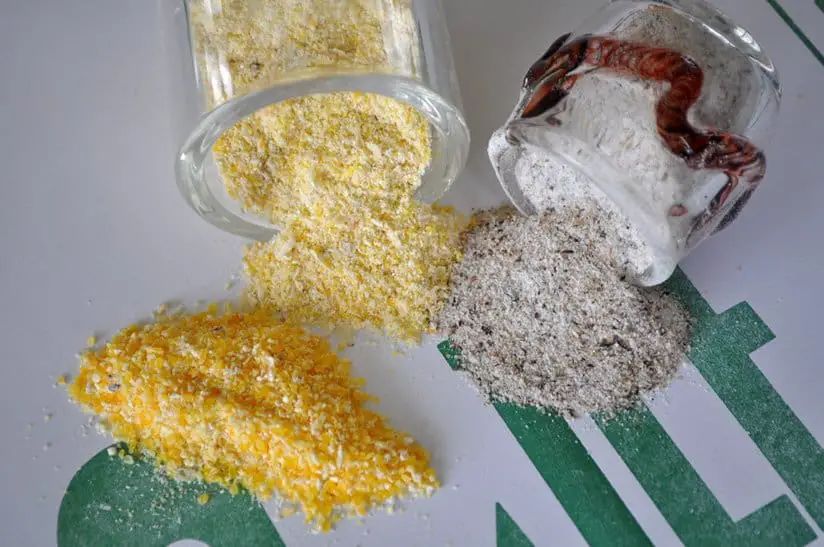
The third key variable is spicing, which varies from region to region. In Philadelphia, sage is a common addition. In Western Pennsylvania, which is more strongly German-influenced, savory, coriander, and marjoram might be added. Still others don’t use any spices, relying instead on richer cuts of meat like liver for flavor. Here, we’ve suggested a Philadelphia-style scrapple with sage. If you prefer, substitute the sage for 1⁄4 tsp each savory, marjoram, and coriander.
Finally, consider the options for serving your scrapple. You can simply eat it plain, piping hot out of the pan, but it goes well with many toppings. Scrapple is a popular breakfast food in parts of the Mid-Eastern U.S. It’s often eaten drizzled with maple syrup or jam, or topped with a fried egg. You can also make it into a sandwich, with a fried egg, cheese, or a slice of onion if desired. Yet another option is scrapple for dinner, served with pepper relish and ketchup. They’re all delicious! Let’s get started.
Instructions
1. Cook the Pork
Place whatever type of pork you are using in a large stock pot and cover with water. Bring to a simmer, then cook for about 2 hours, until it is very tender. Meanwhile, grease the loaf pan.
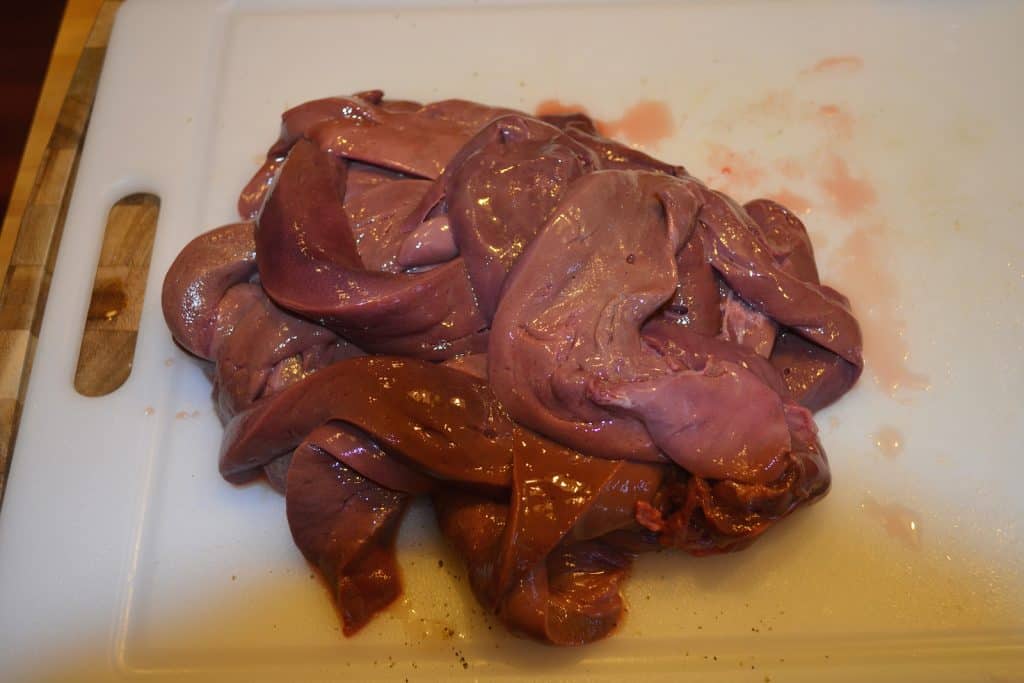
2. Drain and Chop the Pork
When the pork is done cooking, strain off the broth and reserve. Let the pork cool slightly, then put it through a coarse meat grinder setting or chop it. You can chop it all very finely, or leave it slightly coarse.
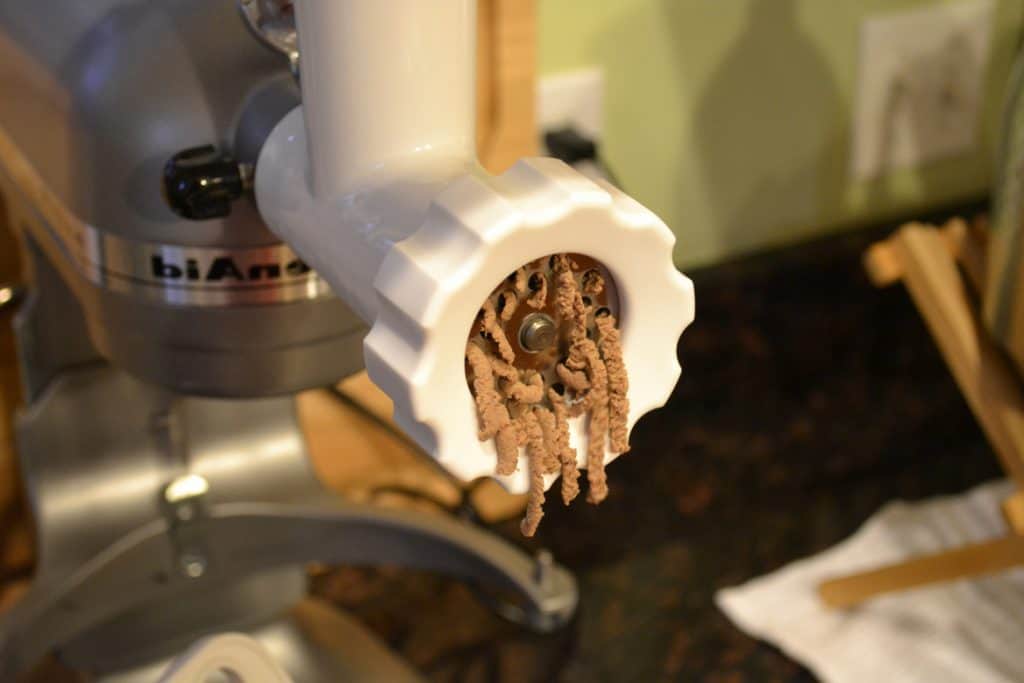
3. Cook the Pork, Broth, Buckwheat, and Cornmeal
Combine the chopped pork and about 1 quart of reserved broth in a pot (you can use the same stockpot). Bring to a simmer, then slowly sift in the buckwheat, and cornmeal stirring constantly. Use a whisk if needed to break up any chunks. Cook until the mixture thickens, 15-20 minutes.
4. Put the Pork Mixture into the Pan
Grease the loaf pan if you haven’t done so already. Pour the mixture into the pan and allow it to cool completely, about 3 hours. Put it in the fridge after letting it cool for an hour or so on the counter.
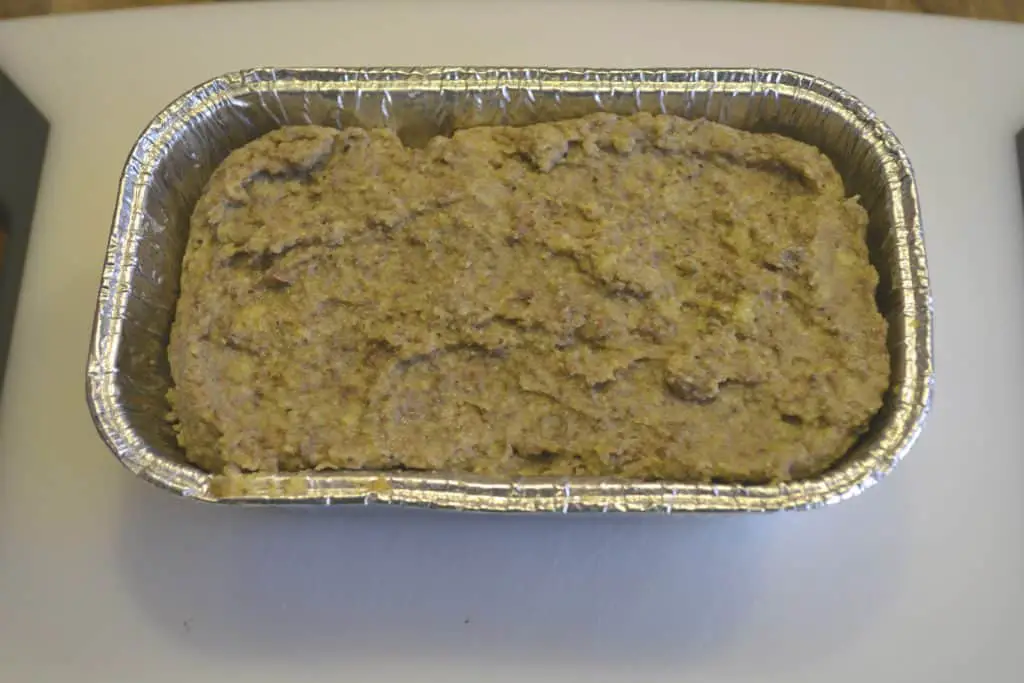
5. Slice the Scrapple
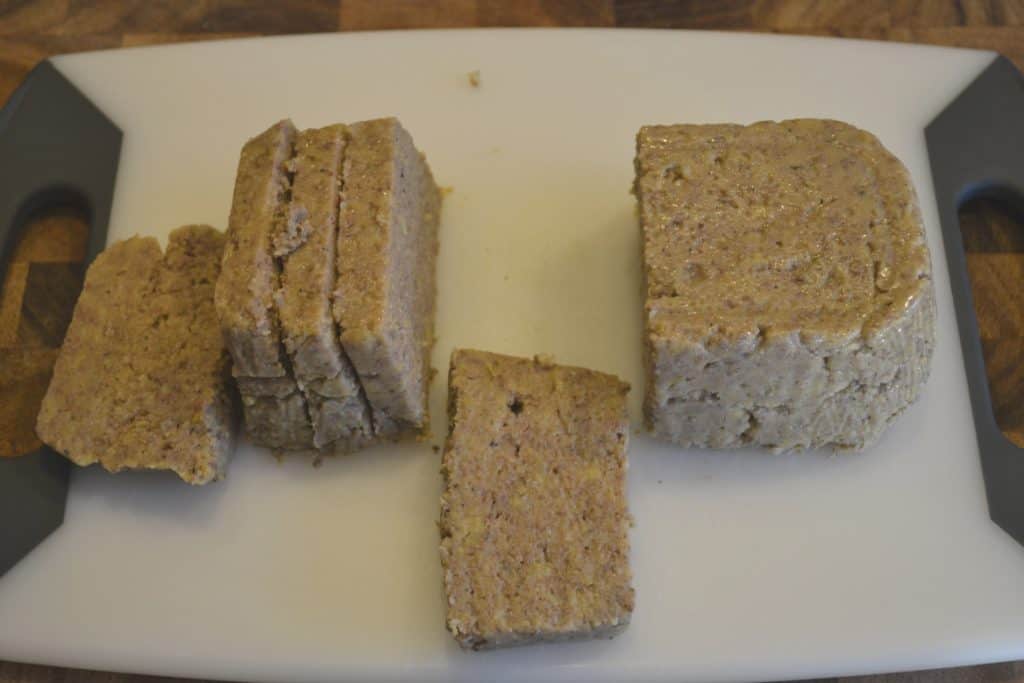
Once the scrapple is completely cooled and set, it can be sliced in preparation for frying. Aim for slices that are between 1⁄4 and 1⁄2 inch thick.
6. Fry the Scrapple
Heat a cast iron or other heavy pan over medium-low heat. When hot, add a few tablespoons of butter, oil, or lard.
Add the scrapple slices and cook, pressing gently with a spatula, until golden brown on the bottom, about 6 minutes. Flip and cook until the other side is golden brown. Remove to plates.
7. Serve the Scrapple
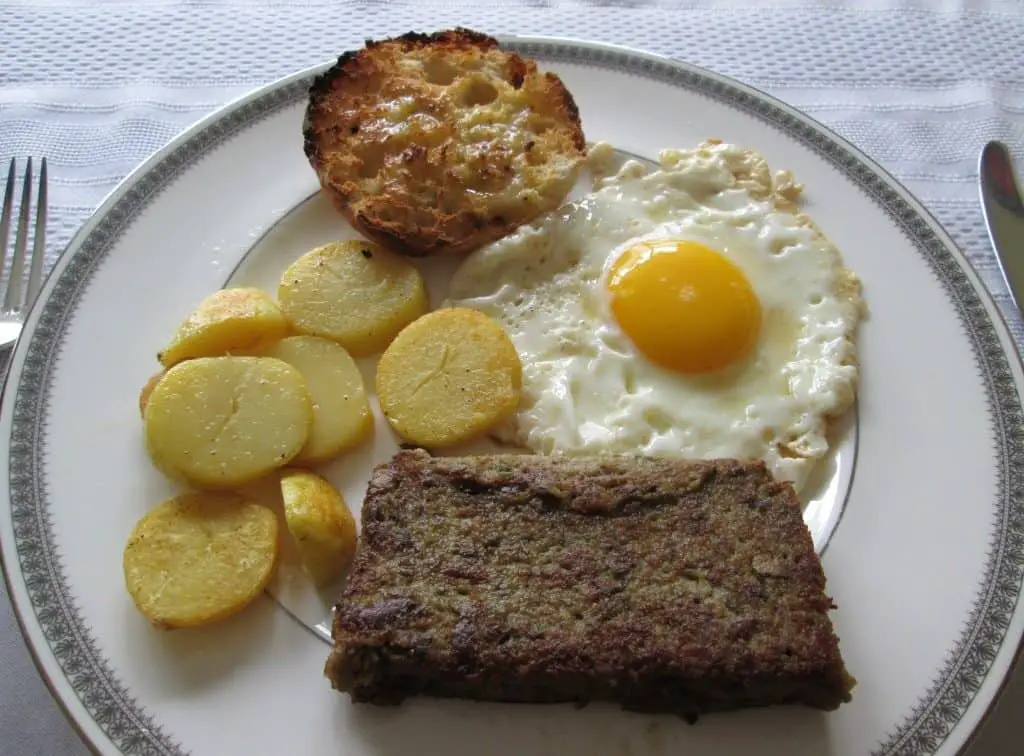
Serve the scrapple right away once it is fried. As I mentioned in the Ingredient Options section, you can serve it for breakfast with eggs, maple syrup, or jam, as a quick sandwich, or for dinner with ketchup and relish.
Pro tips
- Scrapple naturally has a fair amount of water in it, since it is cooked with liquid. To get a crispier crust when frying, gently press down on the slices with a spatula to squeeze out excess moisture.
- Make sure that the slices are only 1⁄4 – 1⁄2 inch thick. If they’re thicker than that, the inside will be mushy when fried.
- All the proportions in this recipe are flexible. If you feel that you’ve got the hang of it, feel free to add more or less meat, broth, meal, or spices to make it your own signature scrapple.Thanks for reading this step-by-step guide to making delicious pork scrapple at home! I hope you’ll find that this traditional dish is one worth keeping around. Have you tried out the recipe? Did the instructions work well for you? Let me know in the comments below!
